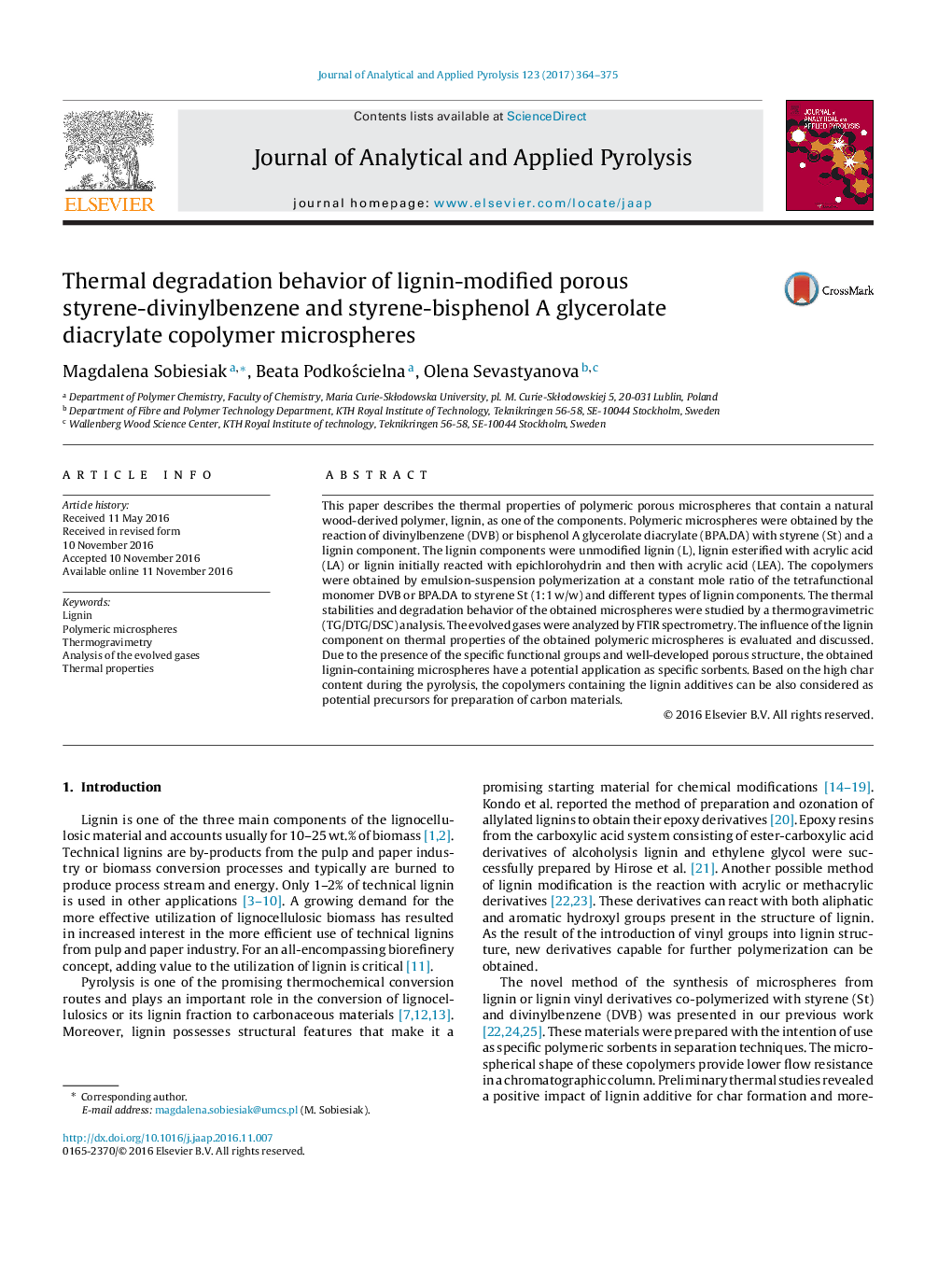| Article ID | Journal | Published Year | Pages | File Type |
|---|---|---|---|---|
| 5134555 | Journal of Analytical and Applied Pyrolysis | 2017 | 12 Pages |
â¢Thermal degradation behavior of lignin-modified copolymers was studied by TG/DSC/FTIR coupled method.â¢Schemes of thermal decomposition of lignin, its vinyl derivatives and their copolymers is proposed.â¢During pyrolysis firstly, condensation processes take place, next depolymerization and decarboxylation reactions proceed.â¢The presented materials can be considered as potential precursors for the preparation of carbons.
This paper describes the thermal properties of polymeric porous microspheres that contain a natural wood-derived polymer, lignin, as one of the components. Polymeric microspheres were obtained by the reaction of divinylbenzene (DVB) or bisphenol A glycerolate diacrylate (BPA.DA) with styrene (St) and a lignin component. The lignin components were unmodified lignin (L), lignin esterified with acrylic acid (LA) or lignin initially reacted with epichlorohydrin and then with acrylic acid (LEA). The copolymers were obtained by emulsion-suspension polymerization at a constant mole ratio of the tetrafunctional monomer DVB or BPA.DA to styrene St (1:1Â w/w) and different types of lignin components. The thermal stabilities and degradation behavior of the obtained microspheres were studied by a thermogravimetric (TG/DTG/DSC) analysis. The evolved gases were analyzed by FTIR spectrometry. The influence of the lignin component on thermal properties of the obtained polymeric microspheres is evaluated and discussed. Due to the presence of the specific functional groups and well-developed porous structure, the obtained lignin-containing microspheres have a potential application as specific sorbents. Based on the high char content during the pyrolysis, the copolymers containing the lignin additives can be also considered as potential precursors for preparation of carbon materials.
